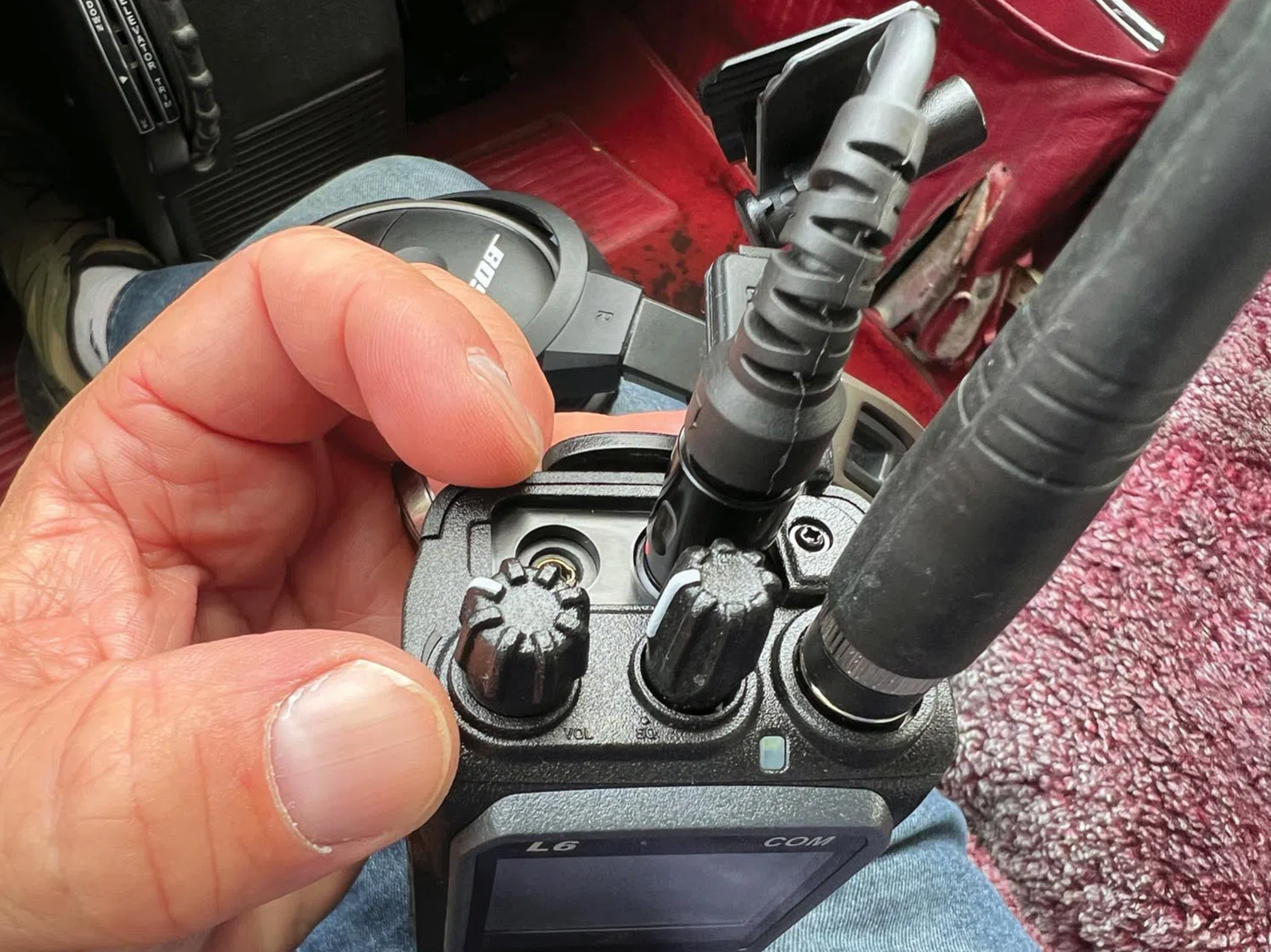 We tested the XGPS170 with WingX Pro version 7 software from Hilton Software. Here, WingX Pro shows FIS-B weather from the XGPS170. |
With deployment of ground stations for Automatic Dependent Surveillance-Broadcast (ADS-B), part of the FAA's Next Generation air traffic control system well underway, we've seen a number of portable devices that combine an external GPS receiver with receive-only ADS-B capability for use with iPads and other portable displays.
Dual Electronics XGPS170 is the latest such device---a small (almost pocketsized) unit that offers WAAS-enhanced (Wide Area Augmentation System) GPS and 978 MHz ADS-B functions, including FIS-B (flight information services- broadcast) weather and, in some cases, TIS-B (traffic information services-broadcast) traffic. Having briefly tested this device, I'm impressed by its GPS and FIS-B functions, but can't recommend it---nor any other passive ADS-B receiver---for full traffic awareness.
Physically, the XGPS170 is a 4.3x2.8 x0.9-inch box with a 3.5-inch antenna. It has a built-in battery that's good for about six hours on a charge, according to Dual, and based on flight testing, I think that's conservative. The device is provided with a soft plastic non-slip pad with a pocket to contain the unit that's designed to sit on an airplane's glare shield. In my Skylane, it did a fine job of keeping the XGPS170 in place during normal maneuvers. The soft case and pocket also elevate the unit slightly to allow cooling air to circulate---that's important because the XGPS170 can get quite hot while operating.
The XGPS170 communicates with an iPhone, iPad or Android-based tablet using the Bluetooth short-range radio protocol. I had no trouble getting the system to work with my iPad 2. I tested it with WingX Pro version 7 from Hilton Software. The device is also supported by AOPA FlyQ, Bendix/King myWingMan and Flight Guide iEFB, plus Avilution and Naviator on Android devices. Additional apps, including Anywhere Map, EFB and Mobile Flight Deck will be available soon.
When connected to a supported device running compatible software, the XGPS170 functions as both a WAAS-enhanced external GPS and ADS-B receiver. I found that it worked perfectly as a GPS position source and as a weather receiver---but it didn't detect traffic while flying in an area with active flight training.
The reason it didn't detect traffic is a function of how the ADS-B system works. There are two completely different data channels. The first is an enhanced version of the Mode-S transponders already used by the vast majority of airliners, business jets and turboprops, which operate at 1090 MHz.
For technical reasons, the FAA decided to offer a different data channel for low-altitude general aviation operators---that's the 978 MHz system used by the XGPS170 and other passive devices. A network of ground stations has been installed covering most of the continental U.S. (and parts of Alaska), that offer a rebroadcast function. This system translates between the two data channels, so that aircraft equipped with 978 MHz equipment can see 1090 MHz Mode-S traffic (and vice versa). The ground stations can also relay traffic that is detected by ground-based radar.
 |
Here's the catch: The ground stations only relay traffic on a channel if they're in contact with an ADS-B equipped aircraft on that channel---and then relay traffic within a certain volume around any such aircraft. In other words, to get service you're expected to transmit, as well as receive. The system isn't designed to support passive devices that don't transmit.
In order to get reliable traffic indications on the XGPS170, you'd also need to install a 978 MHz universal access transceiver (UAT). If someone else with a UAT happens to be flying nearby, then you might see some traffic---but the ground station would be relaying traffic based on a volume around that aircraft, not around you. Given these limitations, I can't recommend the XGPS170, or any other passive 978 MHz ADS-B receiver, for traffic awareness.
On the other hand, I'm delighted to recommend the XGPS170 as a completely functional GPS and weather awareness device for pilots who fly within U.S. ADS-B coverage. Devices like this are a bargain for pilots needing in-flight weather data---unlike competing satellite-based systems, ADS-B weather doesn't require a subscription.
Dual's suggested price for the XGPS170 is $799.99. For more information, visit http://gps.dualav.com.

Subscribe to Our Newsletter
Get the latest Plane & Pilot Magazine stories delivered directly to your inbox





